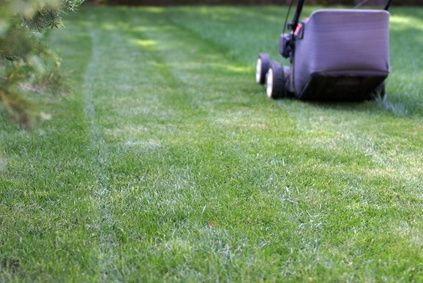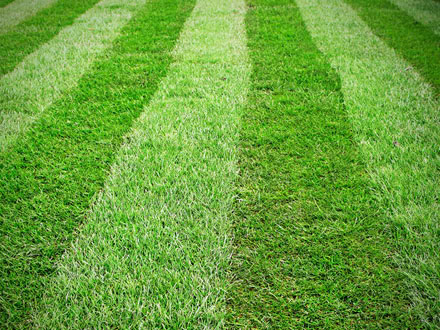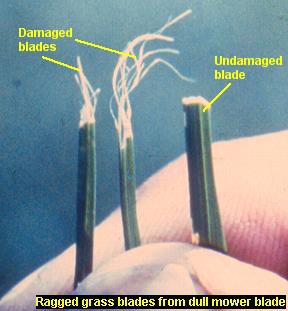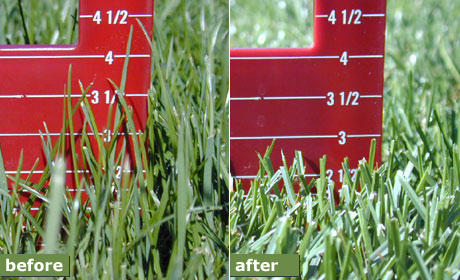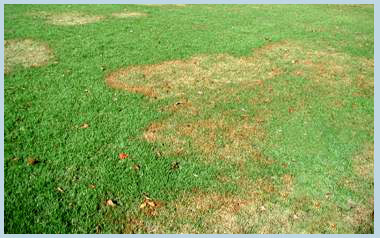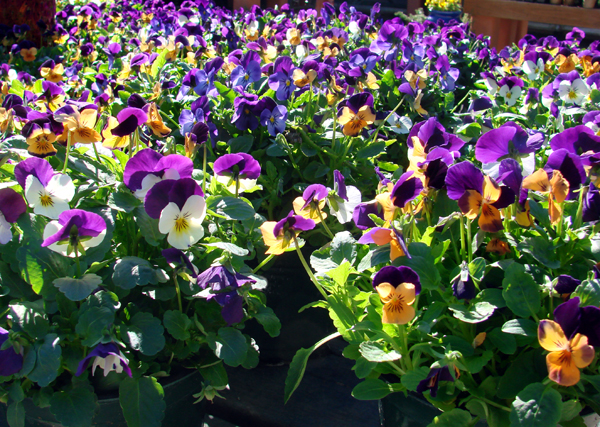Hello everyone and happy Tuesday to you! With the solstice yesterday, summer is finally officially here. It's time to enjoy all the offerings of this wonderful season, from longer days and vacations, to a slower pace and plenty of fun in the sun. Yes, summer is a wonderful time of year, but along with the onset of this warmer period often comes an unwelcome slew of garden pests. From deer eating your precious flowering plants to mosquitoes driving you crazy, these pests may have you abandoning your yards for the relative peace of the indoors. But don't let these pests drive you inside. We have some solutions for handling these pesky critters that will help you beat the bugs and enjoy your yards again.
One of the most prevalent garden pests we have to contend with in our area this month has got to be the Japanese beetle. Japanese beetles were first found in this country in 1916, after being accidentally introduced into New Jersey. Until that time, this insect was known to occur only in Japan where it is not a major pest. Unfortunately, it has flourished in the Eastern United States where it has found vast areas of turf and grassland in which the grubs develop, hundreds of species of plants for the adults to feast on, and no effective natural enemies. It is probably the most devastating pest of the Eastern urban landscape.
Adults emerge from the ground and begin feeding on plants in June. Activity is most intense over a 4 to 6 week period, after which the beetles gradually die off. Individual beetles live about 30 to 45 days. Japanese beetles feed on about 300 species of plants, devouring leaves, flowers, and fruit. They usually feed in groups, starting at the top of a plant and working downward. The beetles are most active on warm, sunny days, and prefer plants that are in direct sunlight. Although a single beetle does not eat much, this group feeding by many beetles results in severe damage.



Here's a few of the pesky bugs now dining on my Crape Myrtles. So what can you do when these devouring bugs hit your yard? There are solutions, but in order to attack the problem at hand, one must truly understand the life-cycle of the Japanese beetle.

Although the adult beetle is only present for about 30 days in the month of June, their life-cycle continues underground for most of the year. Egg laying begins soon after the adults emerge from the ground and mate. Females lay their eggs 2-3 inches down in grassy areas, and usually lay a total of 40 to 60 during their life. The developing beetles spend the next 10 months in the soil as white grubs. Grubs feed on the roots of turf-grasses and vegetable seedlings, doing best in good quality turf in home lawns. However, they can survive in almost any soil in which plants can live.
As Japanese beetle grubs chew off grass roots, they reduce the ability of grass to take up enough water to withstand the stresses of hot, dry weather. As a result, large dead patches develop in the grub-infested areas. If the damage is allowed to develop to this stage, it may be too late to save the turf. Early recognition of the problem can prevent this destruction.
In order to fully battle the Japanese beetle, it is best to take a multi-step approach. Put a stop to the egg laying cycle by treating your infected plants and adult insects with Sevin or Sevin Dust, in concentrate or ready-to-use formula. Fertilome Natural Carbaryl is equally effective. Both treatments are natural and are safe to use on your fruit and vegetable plants. Know that although these beetles can travel and infect an area several miles wide, they tend to lay their eggs in close proximity. So you can bet that if they are in your yard, they are laying eggs there.

Next stop the grub cycle with an application of Milky Spore Grub Control or Bayer Grub Killer Plus. This will rid your lawn of unsightly brown spots that may be caused by grub damage, and will control Japanese beetle grubs in the soil. Use it on grass, in gardens, and in mulch beds. It can be used at anytime.


Another complaint we often hear at the garden center is that deer are eating your tender blooming plants down to the ground. And although it can be tricky to combat these beautiful yet pesky animals, here is an option for keeping them out of your yard.

I Must Garden is an earth-friendly, people and pet-friendly company out of Chapel Hill that offers a line of repellents based on essential oils that provide a safe way to protect your plants without the stench of other repellents. Their deer repellent is easy to use, effective all year round, smells pleasant, and is even safe for the deer. They also offer a full line of rabbit, snake, mole & vole, squirrel, cat & dog, mosquito, flea & tick, and insect repellents. We've got them all down at Garden Supply.

 We are also proud to carry EcoSmart brand insect killer and repellents. Based on essential oils, EcoSmart offers a line of insecticides that are 100 % safe for use around children and pets.
We are also proud to carry EcoSmart brand insect killer and repellents. Based on essential oils, EcoSmart offers a line of insecticides that are 100 % safe for use around children and pets.

Hopefully these tips will keep the nasties out of your yard so you can get back out there and relish these beautiful summer evenings.
Enjoy!







